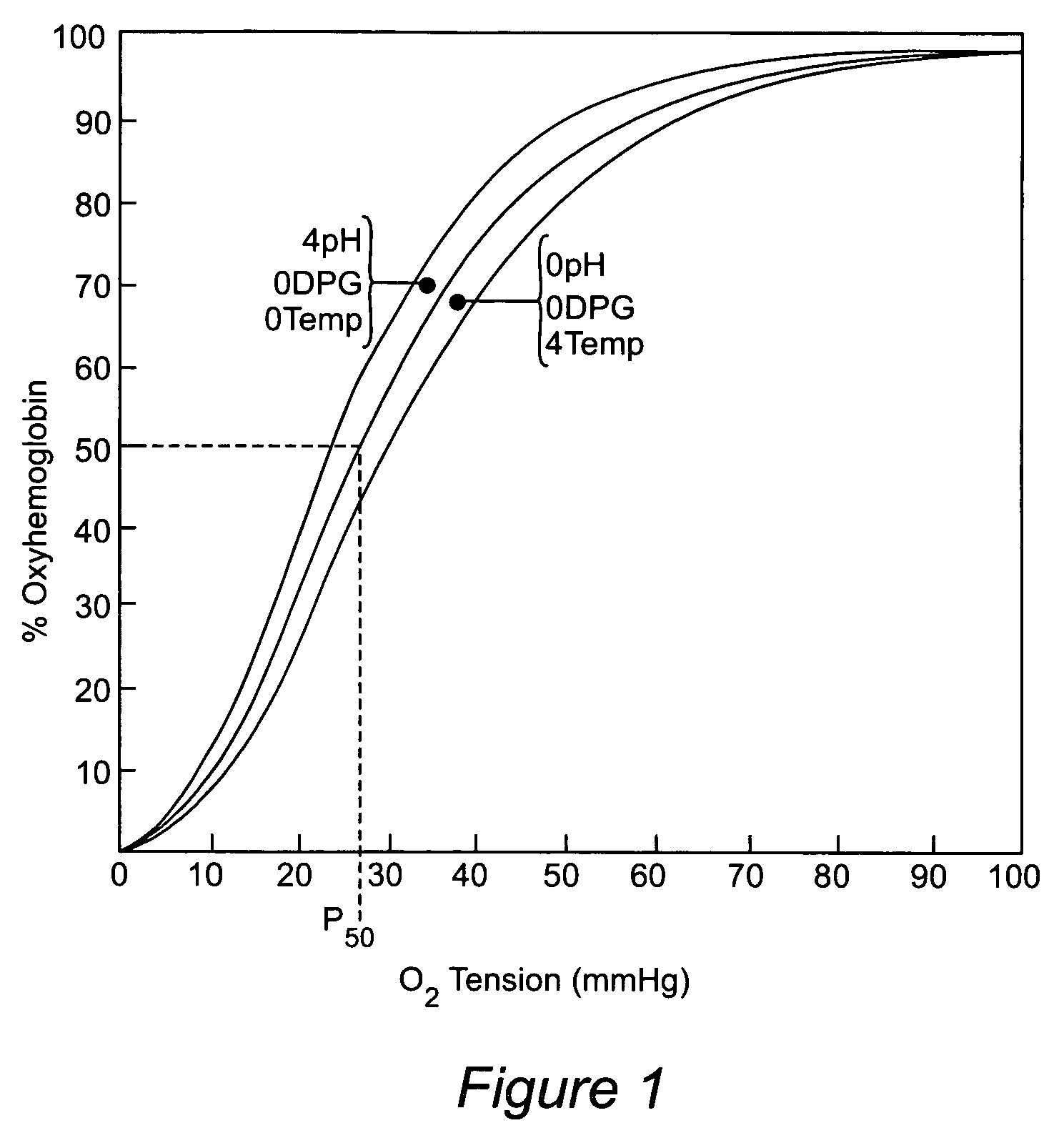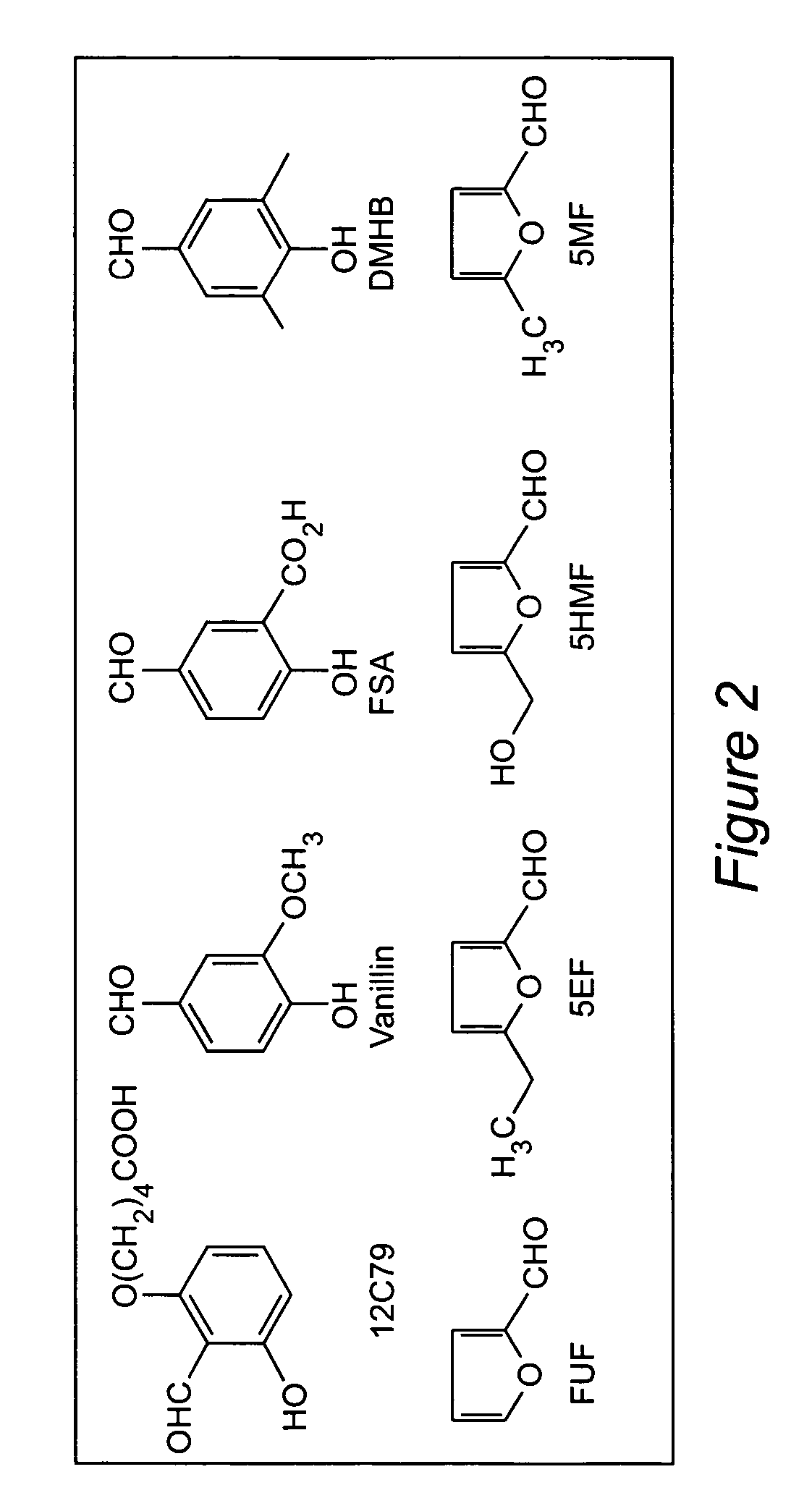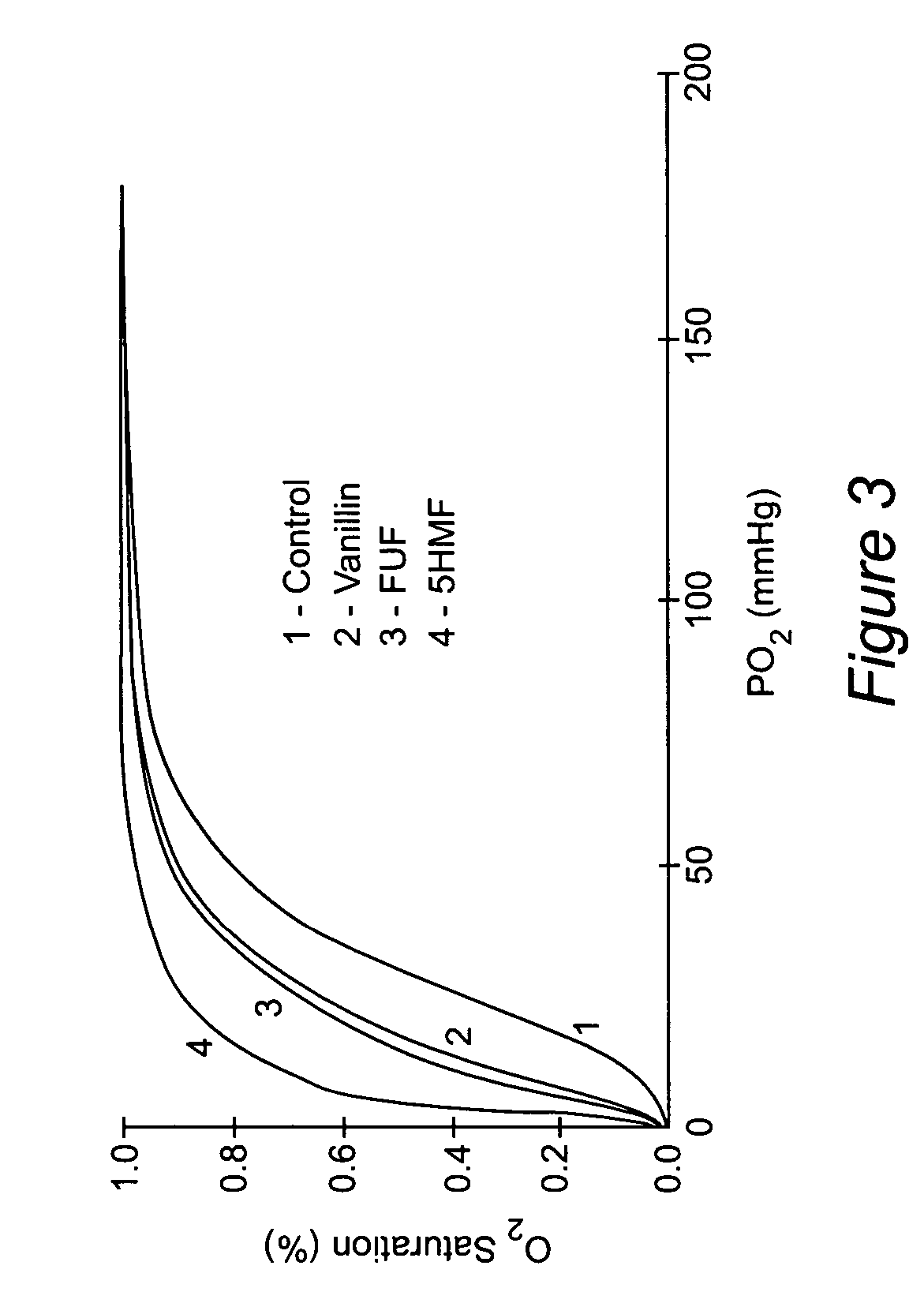Anti-sickling agents
a technology of sickle cell disease and anti-sickling agent, which is applied in the field of 5-membered heterocyclic antisickling agent, can solve the problems of high incidence of gall stones, local tissue damage and severe pain, and impairment of hepatic excretory function, and achieves high-efficiency effects
- Summary
- Abstract
- Description
- Claims
- Application Information
AI Technical Summary
Benefits of technology
Problems solved by technology
Method used
Image
Examples
example 1
Structural Basis for the Potent Antisickling Effect of a Novel Class of 5-Membered Heterocyclic Aldehydic Compounds: In Vitro Tests and X-ray Crystallographic Studies of the Furanic Compounds, 5HMF, 5MF, 5EF and FUF
Chemical structures of 5HMF, 5MF, 5EF and FUF are shown in FIG. 2.
[0047]Regulating the Hb allosteric equilibrium to the relaxed conformation has been of interest in medicine, as compounds that bind to HbS that produce high-affinity HbS, which do not polymerize have been clinically evaluated as antisickling agents to treat sickle cell anemia. Two such compounds are vanillin (Abraham, et al., 1991) and 12C79 (Beddell, et al., 1984; Fitzharris, et al., 1985; Orringer, et al., 1986). Both compounds are aldehydes and form Schiff base adducts with Hb. Clinical studies with 12C79 (FIG. 2) showed that intravenous infusion of this compound (40 mg / kg) in patients with SCD resulted in the formation of compound-Hb adducts at levels of more than 30% without any adverse effect (Orringe...
example 2
In Vivo Antisickling Effect of 5-HMF
[0079]In vivo antisickling effect of 5-HMF was investigated using transgenic (Tg) mice that produce human Hb S. Since the blood of wild type mice has an extremely right-shifted OEC (P50 of mouse blood: 40–44 mm Hg) as compared with the OEC of human blood (P50 of AA cells: 26.5 mm Hg; SS cells: 32 mm Hg), Tg sickle mice that produce approximately equal amounts of human and mouse β-globin and 100% human βs-globin were used in this study. The P50 of these mice are between 26 and 34 mm Hg depending on the percentage of mouse β-globin. We used 5% oxygen (5% O2, 95% N2), because they develop pulmonary sequestration almost exclusively upon exposure of these mice to 5% O2. Although similar changes occurs under oxygen pressures between 6 and 10 mm Hg, not all mice develop hypoxia-induced pulmonary sequestration indicating that high numbers of Tg sickle mice are necessary to obtain statistically significant results. Upon exposure to hypoxia, we determine th...
example 3
Generic Synthetic Schemes for Making Representative Compounds of the Invention
(ref. Vogel's Textbook of Practical Organic Chemistry, 5th edition, 1978, by Brian S. Furniss et al.)
[0082]
The preparation of the monosubstituted aldehydes 5 involved the use of the classical Vilsmeier reaction (dimethylformamide / phosphorous oxychloride) with the appropriate substituted starting material.
[0083]The preparation of the disubstituted aldehydes, 6 can be accomplished in two ways. Starting with the appropriate monosubstituded compound 4, will be lithiated at 78° C. with butyl lithium and quenched with the appropriate bromoalkyl followed by the Vilsmeier reaction to yield the required aldehyde 6. Alternatively, starting with the protected aldehyde 2, compound 6 will be prepared by lithiation with the appropriate bromoalkyl compounds at 78° C. followed by acidic hydrolysis to yield the required aldehyde. 6.
PUM
| Property | Measurement | Unit |
|---|---|---|
| survival time | aaaaa | aaaaa |
| volume | aaaaa | aaaaa |
| pH | aaaaa | aaaaa |
Abstract
Description
Claims
Application Information
 Login to View More
Login to View More - R&D
- Intellectual Property
- Life Sciences
- Materials
- Tech Scout
- Unparalleled Data Quality
- Higher Quality Content
- 60% Fewer Hallucinations
Browse by: Latest US Patents, China's latest patents, Technical Efficacy Thesaurus, Application Domain, Technology Topic, Popular Technical Reports.
© 2025 PatSnap. All rights reserved.Legal|Privacy policy|Modern Slavery Act Transparency Statement|Sitemap|About US| Contact US: help@patsnap.com



